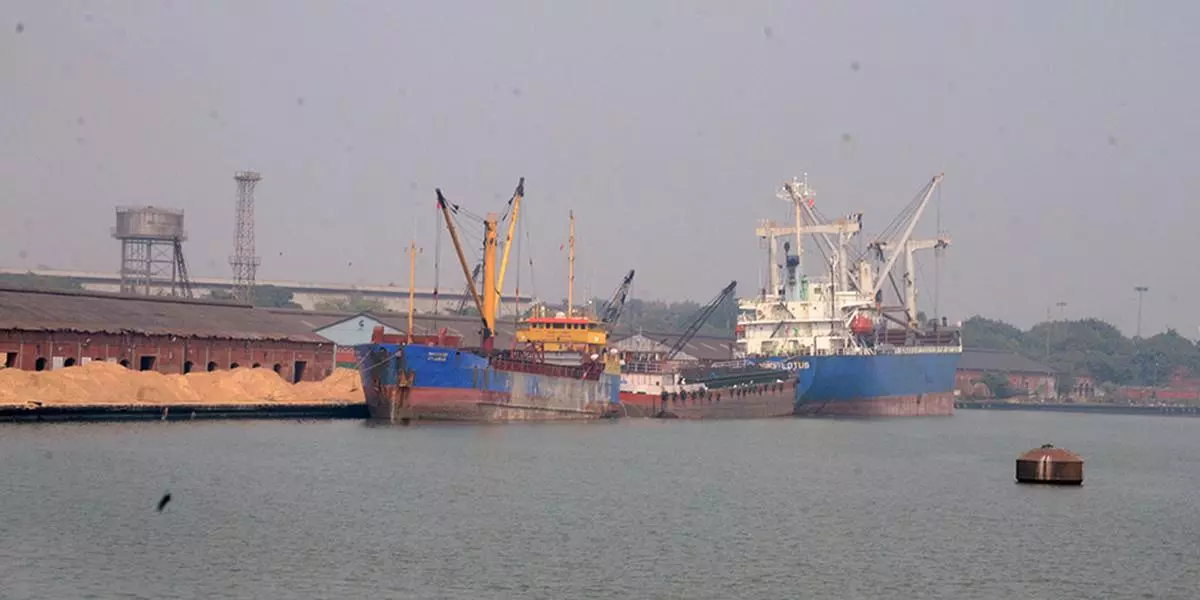
SMP Kolkata reports 3.75% drop in cargo handling in FY25, first decline since pandemic
KOLKATA : Syama Prasad Mookerjee Port, Kolkata, has recorded a decline in cargo handling in FY2025 — the first drop after the pandemic, even as the twin port system spread across Calcutta and Haldia showed signs of pullback during the last quarter.
The port handled 63.95 million tonnes of cargo in the year ended March 31, down 3.75 per cent from the record high of 66.44 mt it achieved in the previous fiscal. In contrast, 12 government controlled ‘major ports’ cumulatively posted a 4.34 per cent rise in cargo handling in FY25 and SMPK was the only port other than Mormugao of Goa to experience deceleration.
The major ports handled 854.85 mt cargo in FY25, up from 819.29 mt in FY24. Kandla, Jawaharlal Nehru Port Authority (Mumbai), Chennai and Ennore showed an above average growth.
While the slippage in SMPK, formerly Kolkata Port Trust, was palpable throughout the year, in part because of a slowdown in coking coal import, the performance in the last quarter showed signs of revival.
Taking advantage of the fair weather season, the port managed to attract bigger ships for transhipment operations in the high sea, and handled 19.76 mt cargo between January and March compared with 16.25 mt in the same period of FY24, a growth of 21.6 per cent.
“We carried out a number of transhipment operations in the last three month using floating cranes to bring coal. It gave additional volume to the port,” a port user pointed out.
During transhipment, cargo is handled twice within the port boundary — once when it is unloaded from large ships to smaller vessels in the high sea and then from smaller vessels to berth at the port. When ‘x’ volume of cargo is received by importers at the dock, SMPK counts 2x cargo handled in port if done through transhipment.
While Haldia Dock System handled 47.31 mt cargo in FY25 compared with 49.53 mt in FY24, counting a 4.49 per cent decline, Kolkata Dock Complex handled 16.64 mt cargo, down from 16.9 mt in FY24, slowing down by 1.58 per cent.
A close look at the cargo pattern at SMPK revealed that the two riverine ports, slowed down by low drought, handled only 16.01 mt coking coal, consumed by the steel industry, down from 23.23 mt in FY24.
The drop was made up in part by higher container cargo, liquid cargo, petroleum cargo and other cargoes. Even as SMPK is known to be a port where bulk cargo movement is significant, there was a 10 per cent rise in container traffic to 13.12 mt in FY25, notably at Haldia which offers better draught than Calcutta.
The performance of container movement will be watched closely in this fiscal given the uncertainty gripping global trade following the tariff measures announced by US president Donald Trump. Tea and engineering products are some of the containerised items exported out of SMPK.
Moreover, the deteriorating political relations between India and Bangladesh will also play out in FY26 as many user industries were trying to use waterways from Haldia and Calcutta to serve the Bangladesh market and also reach Northeast India as an alternative to the land route.
